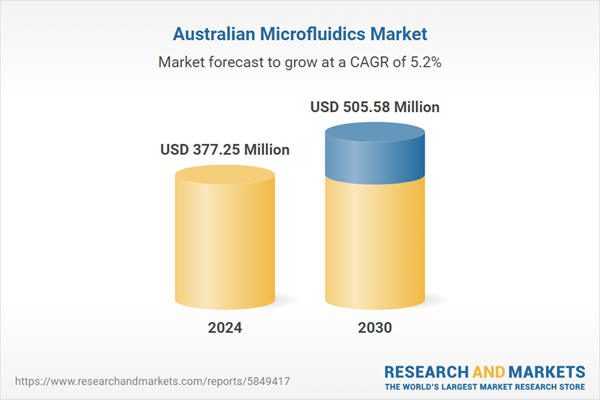Speak directly to the analyst to clarify any post sales queries you may have.
10% Free customizationThis report comes with 10% free customization, enabling you to add data that meets your specific business needs.
In Australia, this market is advancing with the support of robust research infrastructure, increasing public and private investment, and rising demand for sophisticated diagnostic and therapeutic tools. The widespread application of lab-on-a-chip platforms in medical diagnostics is a major growth driver. However, the industry continues to face challenges such as high research and prototyping costs, complex regulatory pathways, and the need for specialized manufacturing capabilities. Additionally, the technical difficulty of ensuring consistent performance and scalability for commercial-scale production remains a significant barrier to wider market adoption.
Key Market Drivers
Growth in Healthcare Industry
Australia's dual public-private healthcare model, largely funded through Medicare, plays a central role in supporting the adoption of innovative technologies like microfluidics. The country's healthcare landscape is evolving with a strong emphasis on early diagnosis, personalized treatment, and technological advancement. This progression is significantly boosting demand for high-precision and cost-effective diagnostic tools. Microfluidic devices, known for their rapid fluid processing capabilities, are increasingly integrated into Australian clinical practices to meet these evolving healthcare needs. Their compact design, minimal sample requirements, and efficiency make them ideal for point-of-care applications, contributing to the market’s expansion within the country’s health sector.Key Market Challenges
High Cost of Manufacturing
The high cost of manufacturing remains a critical barrier in the Australia microfluidics market, particularly in the shift from academic research to full-scale commercialization. Although Australia has demonstrated strong capabilities in microfluidics research, the complexity and cost of production hinder the widespread deployment of these technologies. Manufacturing microfluidic devices often requires cleanroom environments, high-precision machinery, and the use of specialized materials like silicon, polymers, or glass. Techniques such as injection moulding and soft lithography further add to the cost due to the need for skilled personnel and stringent quality control. These factors collectively contribute to elevated production costs, limiting the scalability and commercial viability of microfluidic innovations in Australia.Key Market Trends
Growing Emphasis on Point-of-Care (PoC) Diagnostics
There is a growing emphasis on point-of-care (PoC) diagnostics within the Australia microfluidics market. Increasingly, the healthcare sector is focusing on delivering quick, accessible, and patient-centric diagnostic solutions - particularly in rural or under-resourced regions. Microfluidic technologies, known for their precision and low-volume sample requirements, are ideally suited for these applications. Concurrently, regulatory authorities in Australia are under pressure to ease the rebate and compliance landscape for PoC testing, enabling broader usage among general practitioners and frontline healthcare providers. This regulatory shift, combined with rising clinical demand, is accelerating the integration of microfluidic platforms into PoC diagnostics across the country.Key Market Players
- MTPConnect
- SCHOTT AG
- Microfluidics Biomedical Pty. Ltd.
- SDR Scientific Pty Ltd
- WHITE RABBIT SCIENTIFIC LIMITED
- Australian National Fabrication Facility
- Merck Pty. Ltd.
Report Scope
In this report, the Australia Microfluidics Market has been segmented into the following categories, in addition to the industry trends which have also been detailed below:Australia Microfluidics Market, By Material:
- Glass
- Silicon
- Polymers
- Others
Australia Microfluidics Market, By Application:
- In-vitro Diagnostics
- Pharmaceutical & Life Science Research & Manufacturing
- Therapeutics
- Others
Australia Microfluidics Market, By Region:
- New South Wales
- Victoria
- Queensland
- Western Australia
- South Australia
- Tasmania
- Northern Territory
Competitive Landscape
Company Profiles: Detailed analysis of the major companies present in the Australia Microfluidics Market.Available Customizations
With the given market data, the publisher offers customizations according to a company's specific needs. The following customization options are available for the report.Company Information
- Detailed analysis and profiling of additional market players (up to five).
This product will be delivered within 1-3 business days.
Table of Contents
Companies Mentioned
- MTPConnect
- SCHOTT AG
- Microfluidics Biomedical Pty. Ltd.
- SDR Scientific Pty Ltd
- WHITE RABBIT SCIENTIFIC LIMITED
- Australian National Fabrication Facility
- Merck Pty. Ltd.
Table Information
| Report Attribute | Details |
|---|---|
| No. of Pages | 85 |
| Published | June 2025 |
| Forecast Period | 2024 - 2030 |
| Estimated Market Value ( USD | $ 377.25 Million |
| Forecasted Market Value ( USD | $ 505.58 Million |
| Compound Annual Growth Rate | 5.2% |
| Regions Covered | Australia |
| No. of Companies Mentioned | 7 |









